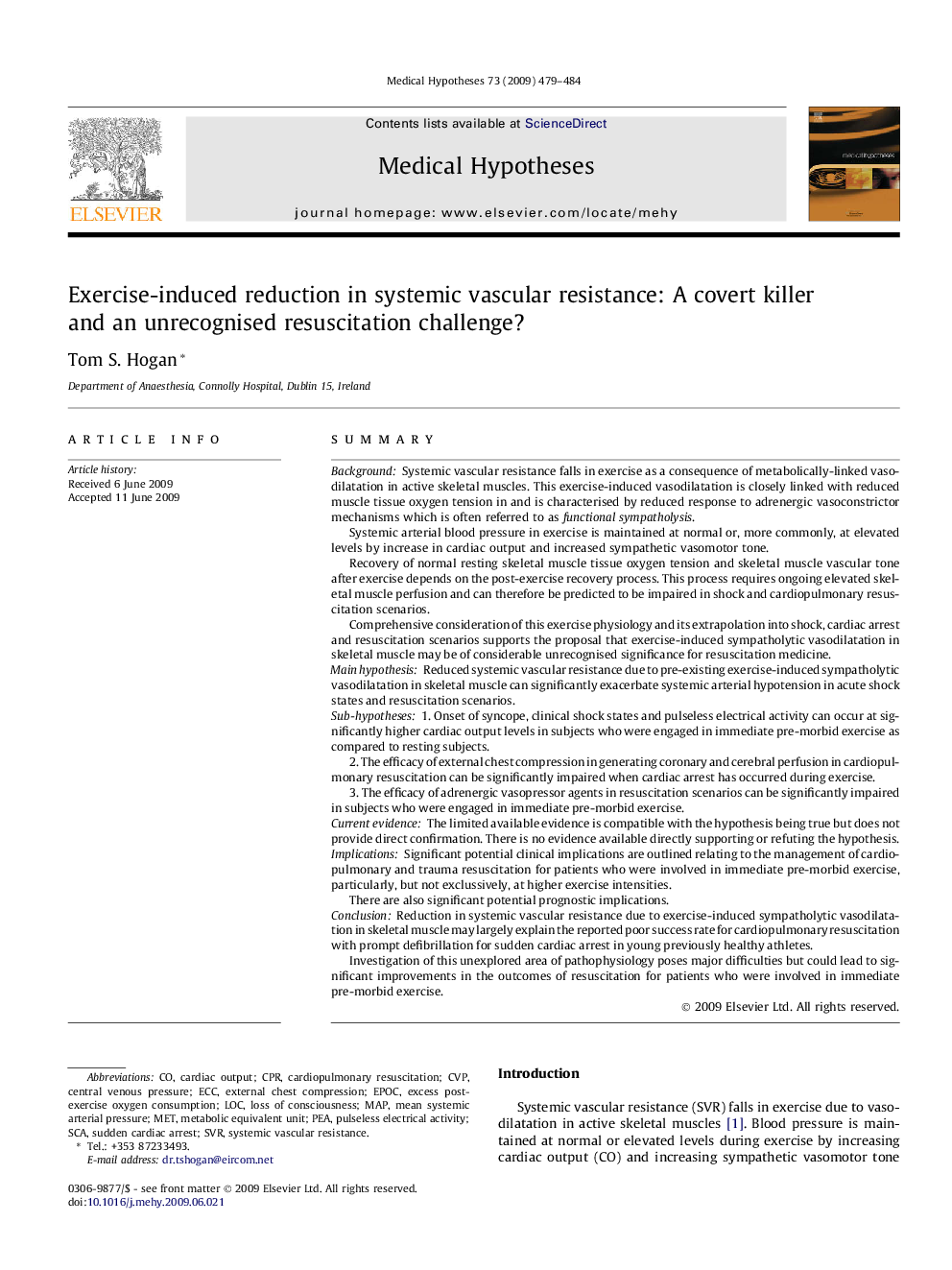| کد مقاله | کد نشریه | سال انتشار | مقاله انگلیسی | نسخه تمام متن |
|---|---|---|---|---|
| 2490378 | 1115066 | 2009 | 6 صفحه PDF | دانلود رایگان |

SummaryBackgroundSystemic vascular resistance falls in exercise as a consequence of metabolically-linked vasodilatation in active skeletal muscles. This exercise-induced vasodilatation is closely linked with reduced muscle tissue oxygen tension in and is characterised by reduced response to adrenergic vasoconstrictor mechanisms which is often referred to as functional sympatholysis.Systemic arterial blood pressure in exercise is maintained at normal or, more commonly, at elevated levels by increase in cardiac output and increased sympathetic vasomotor tone.Recovery of normal resting skeletal muscle tissue oxygen tension and skeletal muscle vascular tone after exercise depends on the post-exercise recovery process. This process requires ongoing elevated skeletal muscle perfusion and can therefore be predicted to be impaired in shock and cardiopulmonary resuscitation scenarios.Comprehensive consideration of this exercise physiology and its extrapolation into shock, cardiac arrest and resuscitation scenarios supports the proposal that exercise-induced sympatholytic vasodilatation in skeletal muscle may be of considerable unrecognised significance for resuscitation medicine.Main hypothesisReduced systemic vascular resistance due to pre-existing exercise-induced sympatholytic vasodilatation in skeletal muscle can significantly exacerbate systemic arterial hypotension in acute shock states and resuscitation scenarios.Sub-hypotheses1. Onset of syncope, clinical shock states and pulseless electrical activity can occur at significantly higher cardiac output levels in subjects who were engaged in immediate pre-morbid exercise as compared to resting subjects.2. The efficacy of external chest compression in generating coronary and cerebral perfusion in cardiopulmonary resuscitation can be significantly impaired when cardiac arrest has occurred during exercise.3. The efficacy of adrenergic vasopressor agents in resuscitation scenarios can be significantly impaired in subjects who were engaged in immediate pre-morbid exercise.Current evidenceThe limited available evidence is compatible with the hypothesis being true but does not provide direct confirmation. There is no evidence available directly supporting or refuting the hypothesis.ImplicationsSignificant potential clinical implications are outlined relating to the management of cardiopulmonary and trauma resuscitation for patients who were involved in immediate pre-morbid exercise, particularly, but not exclussively, at higher exercise intensities.There are also significant potential prognostic implications.ConclusionReduction in systemic vascular resistance due to exercise-induced sympatholytic vasodilatation in skeletal muscle may largely explain the reported poor success rate for cardiopulmonary resuscitation with prompt defibrillation for sudden cardiac arrest in young previously healthy athletes.Investigation of this unexplored area of pathophysiology poses major difficulties but could lead to significant improvements in the outcomes of resuscitation for patients who were involved in immediate pre-morbid exercise.
Journal: Medical Hypotheses - Volume 73, Issue 4, October 2009, Pages 479–484